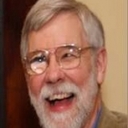Ike Presley
National Project Manager, American Foundation for the Blind
Ike’s professional career began after receiving his Master’s degree from Florida State University in 1978. He served as a teacher of students with visual impairments for 11 years in two metro Atlanta school districts using both the itinerant and resource room service delivery models. He also instructed adults who are blind or visually impaired in the use of assistive technology for 4 years at the Georgia Sensory Rehabilitation Center. From 1993-1999 he served as an assistive technology specialist for the Georgia Project for Assistive Technology traveling around the state conducting assistive technology evaluations of students and provided training to teachers in the use of assistive technology. Since March, 1999, he has been a National Project Manager with the American Foundation for the Blind where he develops and implements training opportunities, materials and resources for service providers working with adults and children who are blind or visually impaired. In 2009, he coauthored, Assistive Technology for Students who are Blind or Visually Impaired: A Guide to Assessment, with Dr. Frances Mary D’Andrea, and has presented nationally and internationally on technology, low vision and other topics related to blindness and low vision.


